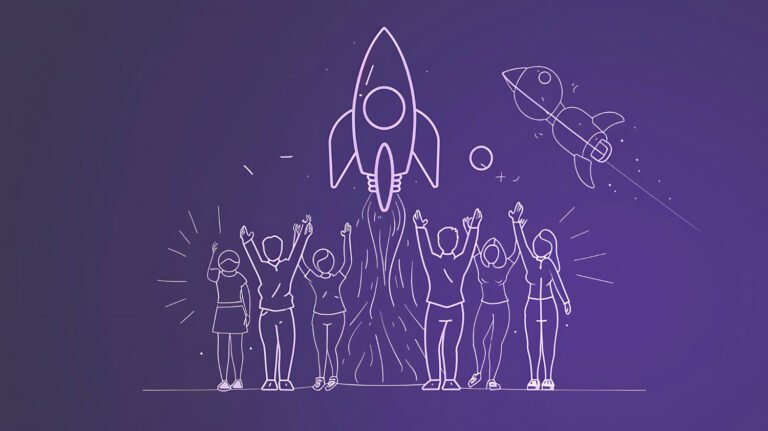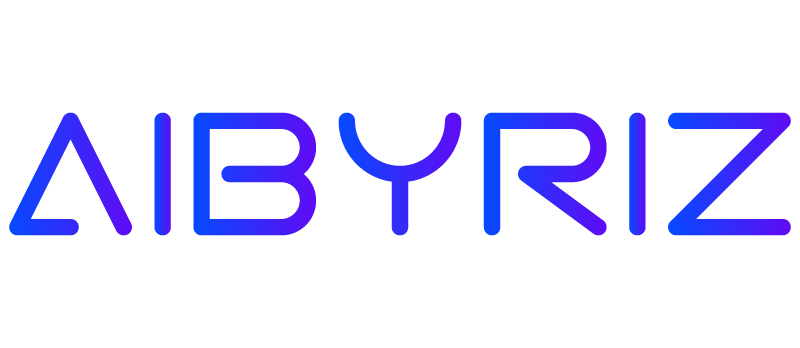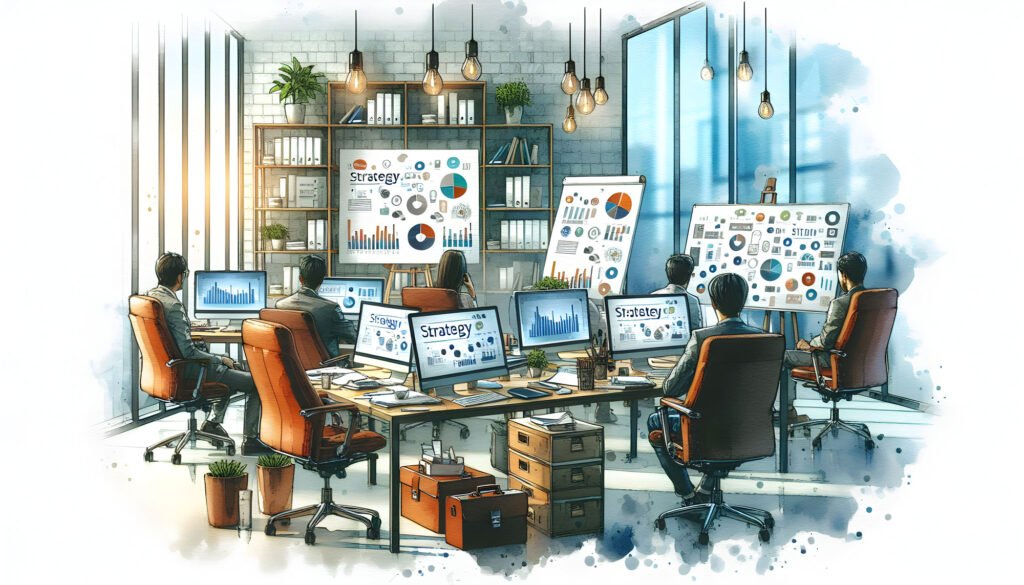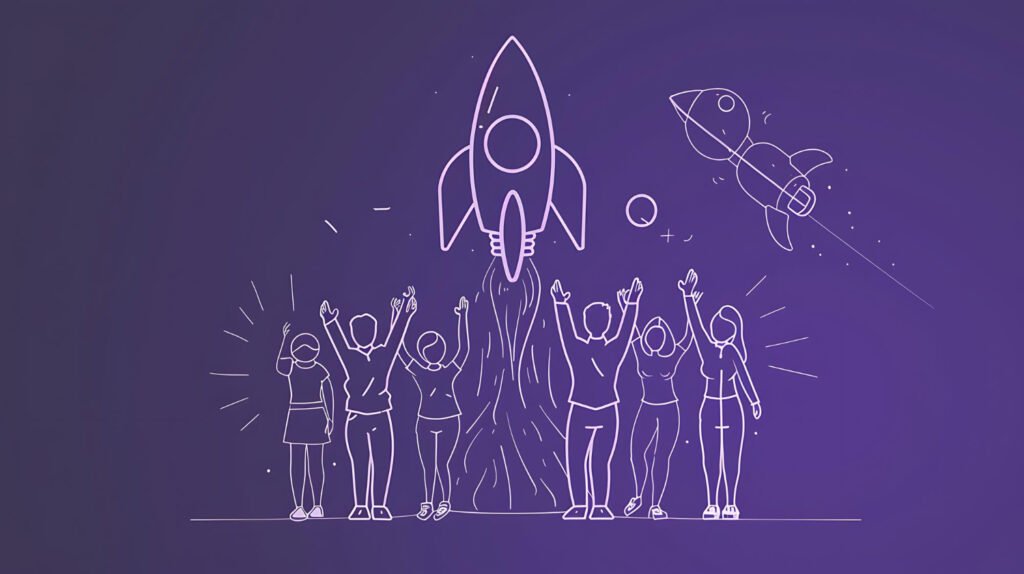Modern business leaders face unprecedented challenges in an ever-changing environment. ChatGPT and artificial intelligence provide powerful ways to tackle complex problems and make smarter decisions. These changes create exciting opportunities for leaders who keep up with trends while they guide their teams and organisations effectively.
ChatGPT’s integration with leadership practices opens new paths to better decision-making and team growth. Leaders now analyse information faster, assess risks better, and solve problems creatively with AI-powered tools. This piece shows how leaders can blend their traditional skills with AI capabilities. They can develop future-ready skills and create innovative team cultures that excel in the digital world.
The Rise of AI-Powered Leadership
The digital revolution has reshaped the scene of leadership, and artificial intelligence has emerged as a powerful driver of change. Recent studies reveal that 81% of workers perform better with AI integration 1, which indicates a radical alteration in how leaders handle their roles and responsibilities.
The progress of leadership in the digital age
Leadership principles are changing faster as organisations adopt digital transformation. Studies show that 93% of workers across industries affirm that being digitally savvy is essential to performing well in their roles 2. Leaders now need to develop technical proficiency and emotional intelligence to guide their teams through unprecedented technological change.
How ChatGPT is changing problem-solving
ChatGPT has become a game-changing tool that develops leadership skills and tackles complex challenges in new ways. The technology stands out in several key areas:
- Root cause analysis and data interpretation
- Strategic decision-making support
- Up-to-the-minute problem-solving assistance
- Better communication and team collaboration
The benefits of AI-assisted leadership
AI integration in leadership practices has shown impressive results. Research shows that 68% of employees want their employers to use more AI technology 1, and 89% of workers believe AI would improve at least half their workload 1. These numbers clearly show how AI-assisted leadership can reshape organisations.
Leaders who adopt AI-powered tools can make evidence-based decisions and promote innovation more effectively. According to 51% of employees, AI creates a healthier work-life balance 1. This leads to greener and more productive work environments. Leaders can now concentrate on strategic initiatives while using technology to streamline routine tasks and improve team performance.
AI-powered leadership means more than just using new technology. It represents a fundamental change in organisational success. With 56% of employees already using AI daily 1, smart leaders are leading this revolution and discovering its full potential to stimulate organisational growth and innovation.
Harnessing ChatGPT for Enhanced Decision-Making
Leaders today are finding how ChatGPT can improve their decision-making process. This advanced AI technology is a great way to get support with complex business challenges and maintain human-centric leadership approaches.
Rapid Information Analysis
ChatGPT transforms big amounts of data into practical insights that help leaders make quick, informed decisions. The technology processes extensive datasets and gives clear recommendations. Research shows that AI systems can reduce the cognitive load on decision-makers by automatically sifting and synthesising key data 3.
Scenario planning and risk assessment
ChatGPT shows remarkable capabilities in generating and analysing multiple future scenarios within strategic planning. This AI technology creates detailed and convincing stories about potential future market conditions. These stories prove especially valuable when you have:
- Market trends to analyse and predict
- Risks to identify and mitigate
- Competitive landscape to assess
- Strategic options to evaluate
Research shows that ChatGPT can effectively transform scenario parameters into vivid and usable narratives. The tool works best under the guidance of experienced strategists 4.
Collaborative problem-solving with AI
ChatGPT’s most exciting development is its role as a decision co-pilot that works with leaders to boost their problem-solving skills. This technology acts as a smart sounding board and offers fresh viewpoints with alternative solutions. Studies show that AI-powered technologies can drive faster and better decision-making through real-time tracking and improved prediction of business developments 3.
The system works as a virtual sounding board for testing ideas 3 and helps leaders verify their strategies. Leaders can now use both artificial intelligence and human intuition. This creates a powerful combination that improves decision quality while you retain control of the human element in leadership.
Cultivating a Culture of Innovation with AI
The AI era needs more than technology adoption—organisations must make a fundamental change in their culture. The largest longitudinal study reveals that 96% of business professionals think about creative ideas as everything in long-term success 5. This finding emphasises why leaders must focus on breakthroughs.
Encouraging creative thinking
Organisations need an environment that supports creativity and accepts new ideas through AI capabilities. Research shows that 41% of business leaders encourage creativity by rewarding employees for taking creative risks 5. This highlights how positive reinforcement drives innovation. Leaders can boost creative thinking through these actions:
- Access to AI-powered tools and training
- Recognition of trailblazing solutions and ideas
- Space for safe experimentation
- Support for cross-functional collaboration
Encouraging a growth mindset
A growth mindset remains fundamental to innovation and has become significantly important in the AI era. 94% of businesses agree they need further investment in creative tools and technology 5. This change in mindset recognises AI as a boost to human capabilities rather than a replacement.
Integrating AI into brainstorming sessions
AI tools have changed traditional brainstorming and made it more productive. Teams can now benefit from several advantages in their ideation sessions:
Enhanced Creativity: AI looks through massive data sets to suggest ideas that humans might miss, which brings fresh viewpoints and groundbreaking solutions 6. Teams can now push past creative blocks and keep their momentum going during brainstorming.
Rapid Ideation: ChatGPT helps teams create and assess ideas faster. 62% of organisations report improved efficiency in idea generation 5. Teams can now spend more time fine-tuning and applying their best concepts.
Diverse Perspectives: AI reduces cognitive biases by running different scenarios and viewpoints 6. This creates a detailed problem-solving approach that results in groundbreaking and inclusive solutions.
A successful shift to an AI-ready culture needs steady dedication and flexibility. Companies that smoothly combine AI with their creative process while keeping people at the centre are ready for continuous breakthroughs and growth in the digital world.
Developing Future-Ready Leadership Skills
Leadership skills must evolve with the faster-paced advancements in artificial intelligence. Organisations need leaders who are prepared for the future. AI is expected to double workplace efficiency and increase profitability by an average of 38% by 2035 7. This makes it significant for leaders to adapt and grow with these changes.
Balancing technical knowledge with emotional intelligence
Modern leaders need to excel at what experts call the “twin superpowers” – artificial and emotional intelligence. In 2023, 35% of businesses already use AI 8. Success depends on a leader’s ability to balance technical expertise with human-centric leadership. Essential competencies for leaders include:
- Strategic AI implementation
- Empathetic communication
- Cross-functional collaboration
- Ethical decision-making
- Cultural intelligence
Adapting to AI-driven workplace dynamics
A fundamental shift reshapes today’s workplace, where 72% of workers prefer a hybrid work model 8. Team leaders must direct their organisations through this evolving environment to build strong teams and increase efficiency. Studies show that 44% of workers’ skills will need updating within the next five years 9. This data emphasises why leaders should adopt flexible management strategies quickly.
Continuous learning and upskilling
Leaders must commit to continuous development to prepare for the future. 42% of companies are considering implementing AI 8, and leaders just need to remain competitive. Teams perform better and show more potential for innovation when their organisations prioritise upskilling.
The World Economic Forum highlights how upskilling and reskilling workers will determine the success of an increased workforce 9. Leaders should build environments where continuous learning becomes part of their organisation’s culture. This approach helps teams thrive in an AI-driven market.
Organisations now use fresh approaches to develop leadership skills. 85% of job vacancies are filled via networking 8, which shows the value of building strong professional relationships and technical skills. Leaders who combine human connections with technical expertise can better handle the challenges of an AI-enhanced future.
Reflections
Modern leadership needs mastery of both artificial and human intelligence. This creates unique opportunities for organisational growth and state-of-the-art solutions. ChatGPT and AI technologies have reshaped traditional leadership approaches. These powerful tools improve decision-making, strategic planning, and team development. The benefits of better workplace efficiency and team performance point to a radical alteration in how leaders guide their organisations through complex challenges.
Today’s leaders are pioneering an exciting development in business leadership. Their success comes from thoughtfully integrating AI capabilities with core human qualities. Organisations that adopt this balanced approach thrive. They keep strong emotional intelligence while advancing their technical capabilities. This positions them perfectly for lasting growth in the digital age. Leaders who stay committed to continuous learning and adaptation can create innovative, shared environments. These environments let both human potential and artificial intelligence drive remarkable achievements.
References
[1] – https://www.forbes.com/sites/brentgleeson/2024/05/06/top-5-leadership-strategies-for-ai-powered-teams/
[2] – https://sloanreview.mit.edu/projects/leaderships-digital-transformation/
[3] – https://hbr.org/2023/10/how-ai-can-help-leaders-make-better-decisions-under-pressure
[4] – https://www.wbs.ac.uk/news/how-to-use-chatgpt-as-a-tool-in-business-strategy/
[5] – https://technologymagazine.com/digital-transformation/can-digital-ai-tools-really-enhance-the-power-of-creativity
[6] – https://symbio6.nl/en/blog/ai-brainstorming-innovation
[7] – https://acacialearning.com/blog/management-and-leadership/5-ways-ai-is-impacting-leadership-development/
[8] – https://blog.talentgarden.com/en/blog/business-innovation/leading-digital-age-balancing-ai-skills-emotional-intelligence
[9] – https://www.cogentinfo.com/resources/adapting-to-the-ai-revolution-understanding-the-integration-of-artificial-intelligence-in-the-workforce














